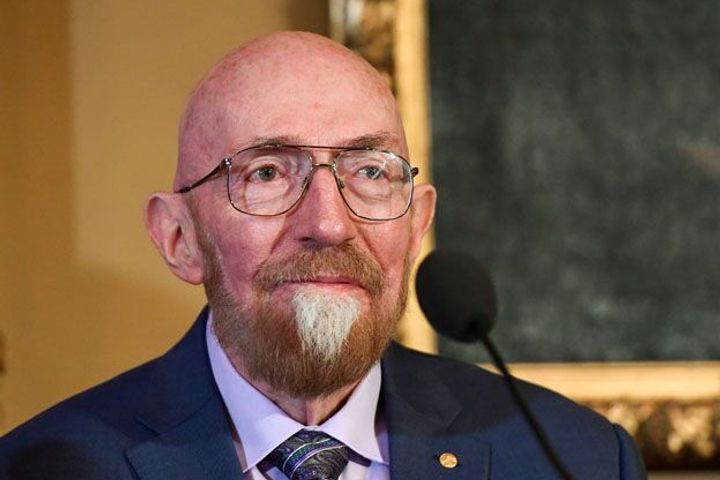 Physicist Thorne Speaks of Animated Life After Winning Nobel Prize
Physicist Thorne Speaks of Animated Life After Winning Nobel Prize(Yicai Global) Nov. 6 -- Since Kip S. Thorne won the Nobel prize in physics in 2017, the most apparent change in his everyday life is the number of emails he gets.
"Now I have become an expert of saying no," Thorne told in an interview with Yicai Global. "I must save time for my research."
Thorne, Rainer Weiss and Barry Barish won the SEK9 million (USD922,700) reward for the first historic observation ofgravitational wavesthat were triggered by a merger of two black holes a billion light years away.
The group of three American scientists used the world's largest gravitational wave observatory called LIGO in 2015 for the experiment which confirmed an important prediction of Einstein's general theory of relativity.
LIGO is going through recalibration to double its detection range and increase such volume eightfold, Thorne said, adding that the upgrade will be finished in February next year.
The revamped LIGO will detect a collision between black holes and neutron stars more frequently and can even see the whirling of black holes in the process. This will help physicists to understand the physical laws of the core of a neutron star better, according to Thorne.
But the experiment requires a bit of luck. Stars explode on estimate every 50 years and humans need to observe 50 galaxies to find any signs of the aftermath of such supernova. "It's still myths. Computers are incapable of simulation and we haven't understood it," Thorne said.
The scientist mentioned China several times during the interview, highlighting the prospects in gravitational wave detection and the country's large astronomical telescope. China is advancing in astrophysics, he said.
China has many superb young theoretical physicists, he said, adding that after retiring from the California Institute of Technology, he was replaced by a young Chinese talent.
Before gravitational waves, the Nobel laureate focused on studying wormholes. The passage through space-time could become a way to time travel, Thorne said.
"We do not know whether wormholes can really exist in our universe. But it is fairly likely that the laws of physics will prevent them from being ever created. Or if it can be created though, the laws of physics will cause it to collapse, so nothing can travel through them," Thorne said.
Sci-fi With Stephen Hawking
Thorne's studies of shortcuts through the universe has led him to contribute to also popular science. The theoretical physicist helped Christopher Nolan to produce space movie Interstellar.
The film's special effects team spent more than a year in building a simulation of a black hole called Gargantua, and it became the first image of such cosmic body in accordance with Einstein's general theory of relativity.
"These people are talented, creative but they are not scientists. To work with them, to brainstorm and to use a new perspective which I did not possess is the happiest thing related to science fiction," he said.Sci-fi is a very important way to enlighten the public about scientific perspectives, he added.
Thorne was a good friend to Stephen Hawking, the late physicist, and the twoeven worked together to make a movie script. "I hope this sketch will be made into a movie in the future," Thorne said.
The two friends often placed wagers on scientific matters, such as if the Cygnus X-1 binary star system, found in 1971, was a black hole. Hawkings admitted his defeat in the 1990s and had to fulfill Thorne's wish with a 12-month subscription of porn magazine Penthouse.
Editor: Emmi Laine